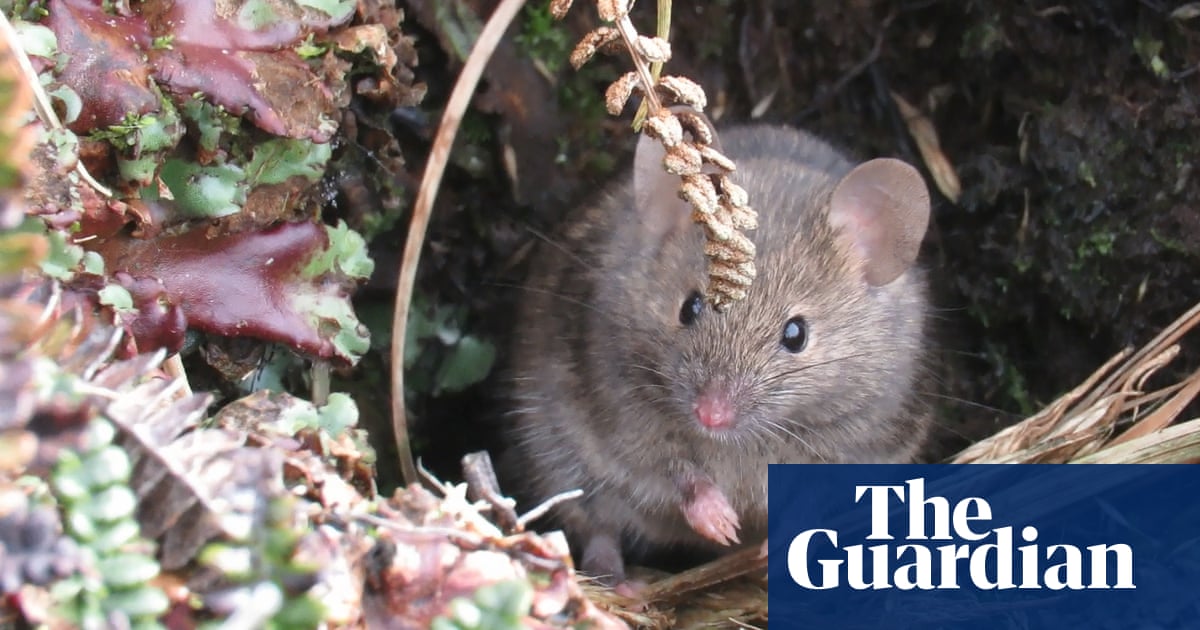
Non-native house mice are to be removed from Marion Island in the southern Indian Ocean to protect the wandering albatross and other endangered seabirds, in the world’s largest eradication programme of its kind.
Mice accidentally introduced on to the remote island by 19th-century seal hunters have thrived in warmer and drier conditions over the past 30 years, devastating the island’s invertebrates and plants, and then devouring the chicks and even adults of ground- and burrow-nesting seabirds.
Marion Island, an uninhabited sub-Antarctic island ravaged by wind 1,370 miles (2,200km) south-east of Cape Town, hosts millions of breeding seabirds, including four species of penguin and a quarter of the world’s wandering albatrosses. Without action against the mice, the albatross is predicted to become extinct on the island, along with 18 of the 28 seabird species currently breeding there.
“The need is urgent and clear for Marion Island’s globally important seabirds which include the iconic wandering albatross, other albatrosses, petrels and prions,” said Keith Springer, the operations manager for the Mouse-Free Marion project.
“While the removal of mice from Marion Island brings clear benefits to the birds and other animal and plant species that live there, the value of this conservation intervention reaches far beyond the island’s shoreline. Marion Island’s seabirds are members of a regional seabird community innately connected to the functioning and health of the sub-Antarctic region.”
A fleet of helicopters will first be brought by sea from South Africa across the “roaring forties”, the notoriously strong westerly winds in the Southern Ocean. In the southern hemisphere winter of 2025, these will be used to spread rodenticide bait across all 30,000 hectares of the island. This is the only method that has proven successful in eradicating rodents from large islands, such as South Georgia.
Removing invasive species from small islands has been shown to be one of the most effective ways of restoring island ecosystems and boosting biodiversity, with humanity’s spread of rodents, cats and foxes one of the key drivers of extinction for the unique species often found there.
In 2018, a decade-long project to remove rats and mice from South Georgia was declared a success, while smaller-scale rodent eradication projects have revived seabird populations on British islands including Lundy, Ramsey and the Shiants.
But eradication operations on inaccessible and rugged islands are notoriously difficult and a major operation to remove mice from Gough Island in the south Atlantic has not yet proved successful.
The Mouse-Free Marion project, the largest yet attempted in a single operation, is a partnership between the South African government and BirdLife South Africa. The charity has established a special not-for-profit company to deliver the eradication, with additional support from BirdLife International, the RSPB and other conservation organisations.
Mark D Anderson, chief executive of BirdLife South Africa, said: “Removing mice from Marion Island will help secure the ecological integrity of this important sub-Antarctic island as well as the future for the millions of birds who live there. But it means much more than that, as it will leave a significant and lasting conservation legacy even beyond saving iconic seabirds as it will restore an important island ecosystem.”












